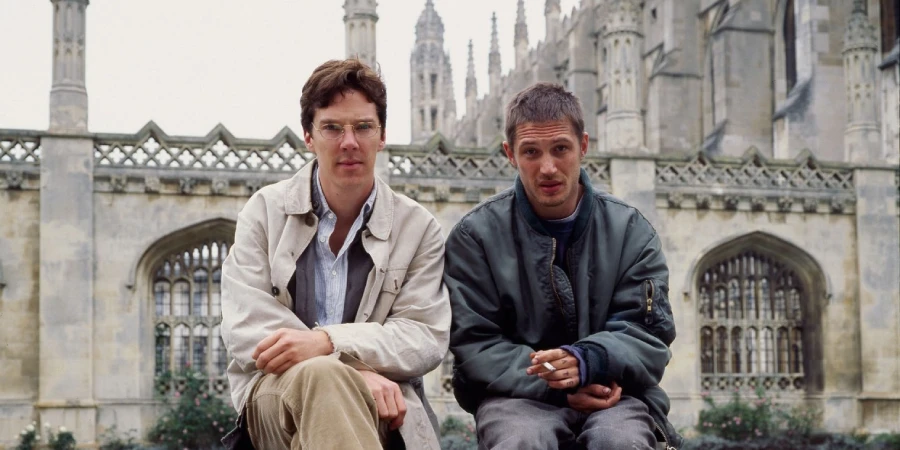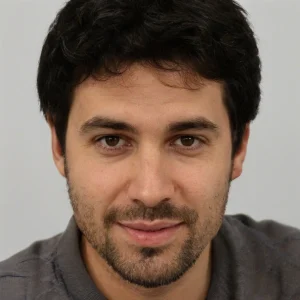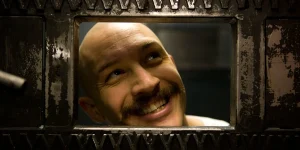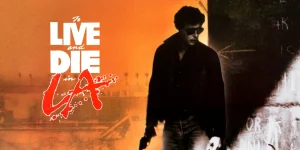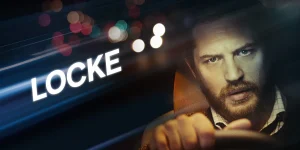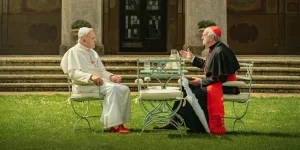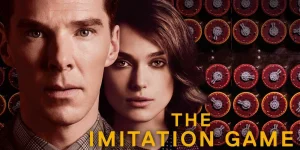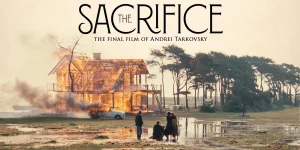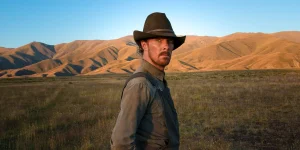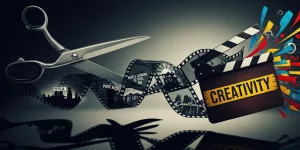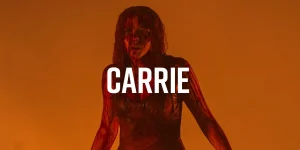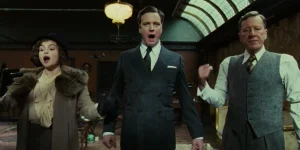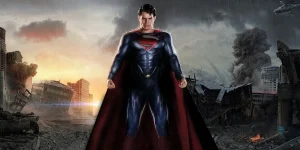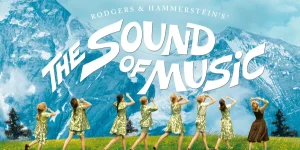Stuart: A Life Backwards is a profoundly moving and intimate biographical drama based on the real-life story of Stuart Shorter, a homeless man with a traumatic past. The film aired as a TV movie on BBC Two in 2007 and stars Tom Hardy in a career-defining role, alongside Benedict Cumberbatch. It’s an adaptation of the memoir by Alexander Masters, who also plays a central character in the narrative.
Told in reverse chronological order, the story unravels the reasons behind Stuart’s chaotic life—his homelessness, violence, addiction, and criminal history—by tracing it back to its roots in childhood trauma. The film is emotionally raw, darkly humorous at times, and deeply human.
Table of Contents
ToggleDetailed Summary
Opening: A Troubled Friendship
The film begins with author Alexander Masters (Cumberbatch) meeting Stuart (Hardy), a witty, volatile, and unpredictable homeless man. They strike up an unlikely friendship after Alexander becomes involved in a campaign to defend two charity workers wrongfully accused of “imprisoning” a homeless person.
Stuart agrees to let Alexander write his biography—but only if he tells the story “backwards,” starting from the present and going back to his childhood. This reverse approach is a brilliant narrative device that mirrors Stuart’s fractured psyche and the way trauma can distort memory.
Middle: Crime, Violence, and Survival
As we move backward through Stuart’s life, the audience sees the devastating effects of homelessness and mental illness. Stuart is violent, often self-destructive, yet endearingly intelligent and honest. His time in and out of prison, his battles with alcohol and drugs, and his stints in psychiatric wards reveal a man struggling not to drown in pain.
Yet despite all this, Hardy’s portrayal never reduces him to a caricature. Stuart is charming, magnetic, and full of contradictions—angry and funny, childlike and cunning, broken yet brave.
Childhood and Abuse
The emotional core of the film is revealed in the latter part as we reach Stuart’s early years. This is where everything clicks into place: Stuart was sexually abused by a man in a children’s home. This trauma, compounded by a physical disability (muscular dystrophy) and a lack of stable parental care, sets him on a path that would ultimately lead to the streets.
This backward journey from chaos to innocence is devastatingly effective. By the time we reach the root of Stuart’s pain, everything we’ve seen up to that point takes on new meaning.
Movie Ending
The film concludes with a return to the present—after we’ve fully retraced Stuart’s life back to its traumatic beginnings. Alexander finishes writing the biography, now fully understanding the complex web of circumstances that shaped Stuart’s life.
Stuart, who had once joked about jumping in front of a train, is later found dead—he had indeed thrown himself under a train in 2002. The film does not dramatize the suicide itself but shows Alexander dealing with the aftermath. He visits the spot where Stuart died and reflects on their friendship, visibly shaken but forever changed.
The ending is not triumphant or redemptive in the traditional sense. Instead, it’s haunting, emotionally truthful, and deeply respectful of who Stuart was—a victim of systemic failure, yes, but also a man who tried, in his own way, to make sense of a life filled with pain.
Are There Post-Credits Scenes?
No, Stuart: A Life Backwards does not have any post-credits scenes. The film ends quietly and solemnly, fitting the tone and weight of the story it tells. The closing moments are designed to leave a lasting emotional impression, not to set up a sequel or extend the narrative.
Type of Movie
Biographical Drama / Psychological Drama / Social Realism
The film blends biography with psychological insight, diving deep into themes of trauma, homelessness, mental illness, and friendship. It’s emotionally heavy but never exploitative.
Cast
- Tom Hardy as Stuart Shorter
- Benedict Cumberbatch as Alexander Masters
- Nicola Duffett as Stuart’s Mother
- Claire-Louise Cordwell, Edna Doré, and others in supporting roles
Tom Hardy’s performance, in particular, is widely considered one of his most nuanced and powerful early roles.
Film Music and Composer
The film’s understated score was composed by Rob Lane, known for his work on British television dramas. The music complements the story without overwhelming it, enhancing emotional moments with a delicate touch.
Filming Locations
Filming took place in Cambridge, UK, and other parts of England. Cambridge is central to the story both in real life and on screen, as it’s where Alexander and Stuart met and spent much of their time together.
The familiar yet unglamorous British settings help ground the film in reality, reinforcing the idea that Stuart’s story could be one of many—unseen lives passed every day on city streets.
Awards and Nominations
- Royal Television Society Award – Tom Hardy (Nominated: Best Actor)
- BAFTA Television Award – Nominated for Best Single Drama
- Widely praised by critics, the film received strong acclaim for its writing and acting, particularly Hardy’s transformation.
Behind the Scenes Insights
- Tom Hardy spent time studying interviews and real-life footage of Stuart Shorter to fully embody his mannerisms and speech.
- Benedict Cumberbatch met with the real Alexander Masters to understand his voice and demeanor.
- The film’s reverse narrative structure was a faithful adaptation of the book’s format.
- Much of the dialogue was improvised or adapted to sound more natural and conversational, especially between Hardy and Cumberbatch.
- Hardy lost weight and physically altered his posture to reflect Stuart’s muscular dystrophy.
Inspirations and References
- Based on the bestselling memoir Stuart: A Life Backwards by Alexander Masters, which was nominated for several literary awards.
- The book itself was a personal project by Masters, who became close friends with Stuart while working in a homeless shelter.
- Themes in the film echo broader discussions about institutional failure, abuse in care homes, and the mental health system in the UK.
Alternate Endings and Deleted Scenes
No major alternate endings are known, but some scenes from Stuart’s early life were reportedly shortened for time. A few monologues were trimmed during post-production to focus more on Stuart’s interactions with Alexander.
Book Adaptations and Differences
The film is very faithful to the book in tone and structure, though naturally condensed for runtime. The memoir is more introspective, featuring Alexander’s internal conflicts and reflections in greater detail. The film brings these moments to life through performance rather than narration, but both versions maintain a deep emotional resonance.
Memorable Scenes and Quotes
Key Scenes
- Stuart breaking down while talking about his childhood trauma.
- The surreal but touching scene where Stuart lists all the labels people have given him (“violent mad dog,” “nutjob,” “psycho”).
- The scene where Alexander and Stuart lie on a hill, talking about life, loss, and identity.
Iconic Quotes
- Stuart: “You should write it backwards. Start with the end. That’s where the answers are.”
- Alexander: “He was chaotic, violent, and profoundly damaged. But he was also brilliant and funny. And he changed my life.”
Easter Eggs and Hidden Details
- The books scattered in Alexander’s flat include real-life texts on psychology and trauma, indicating his growing obsession with understanding Stuart.
- Some of Stuart’s graffiti shown briefly on screen was directly based on real artwork he made in shelters.
Trivia
- Tom Hardy cited this role as one of the most emotionally taxing of his early career.
- The real Stuart Shorter was only 33 years old when he died, though he had lived through more than most do in a lifetime.
- The film originally aired on BBC Two but later gained international recognition after DVD release and word of mouth.
- Despite being a TV movie, it gained near-universal praise from critics for its depth and realism.
Why Watch?
Watch Stuart: A Life Backwards if you’re drawn to stories that go beyond stereotypes—this is not just a “homeless man’s story,” but a raw exploration of trauma, friendship, and resilience. Tom Hardy delivers a breathtaking performance, and the narrative structure keeps you emotionally invested throughout. It challenges viewers to look past surface-level judgments and understand the human being behind the label.
Director’s Other Movies
Directed by David Attwood, whose work includes:
- The Hound of the Baskervilles (2002, TV)
- To the Ends of the Earth (2005, TV)
- Fidel (2002, TV film)
- May 33rd (2004, TV)
Attwood is known for bringing emotional depth and social relevance to his projects.
Recommended Films for Fans
- The Soloist (2009)
- My Name Is Joe (1998)
- I, Daniel Blake (2016)
- Requiem for a Dream (2000)
- Angela’s Ashes (1999)

